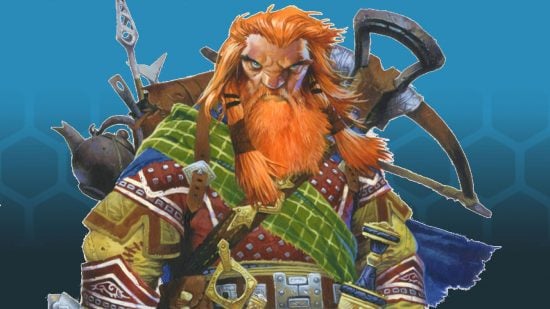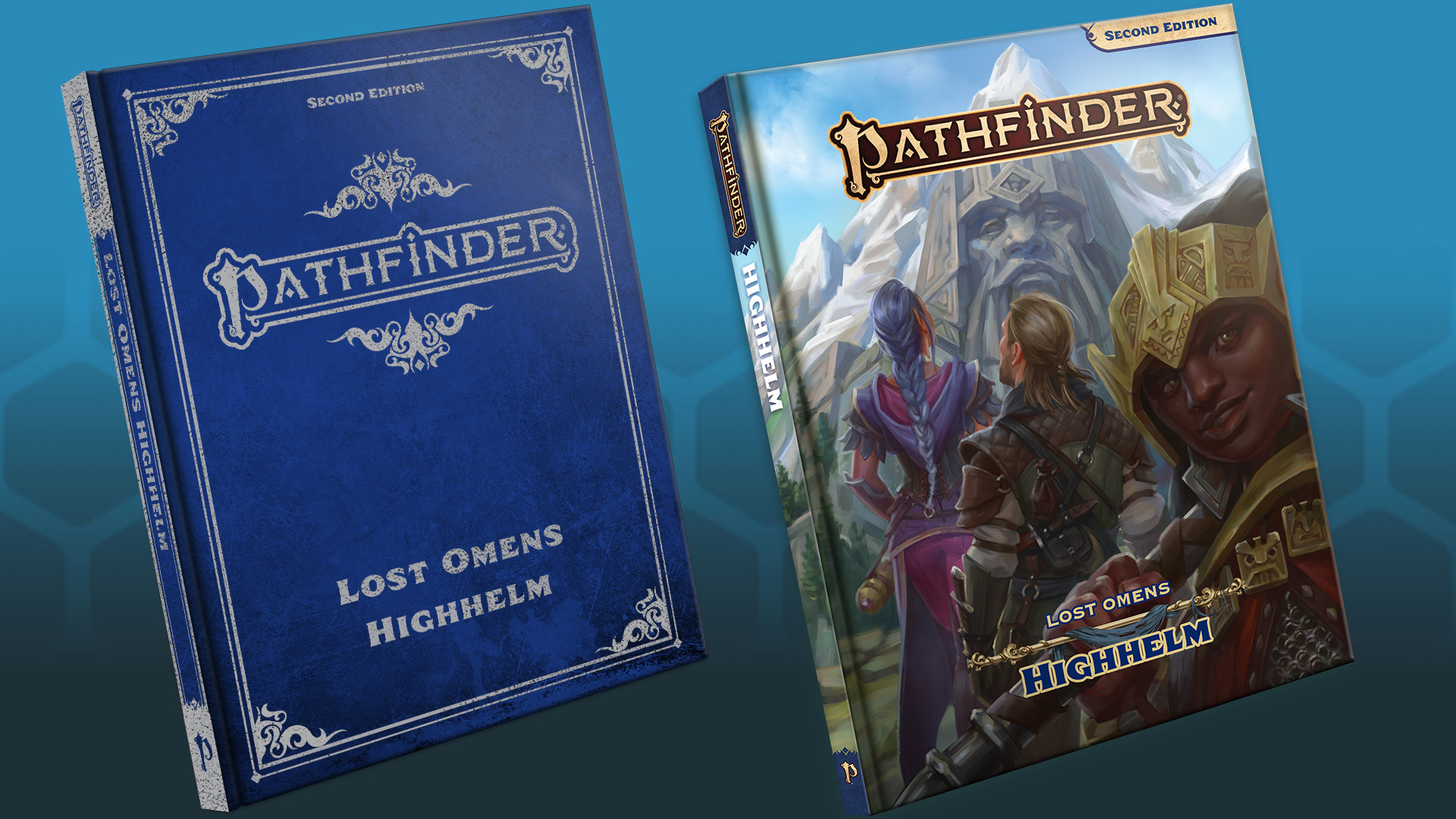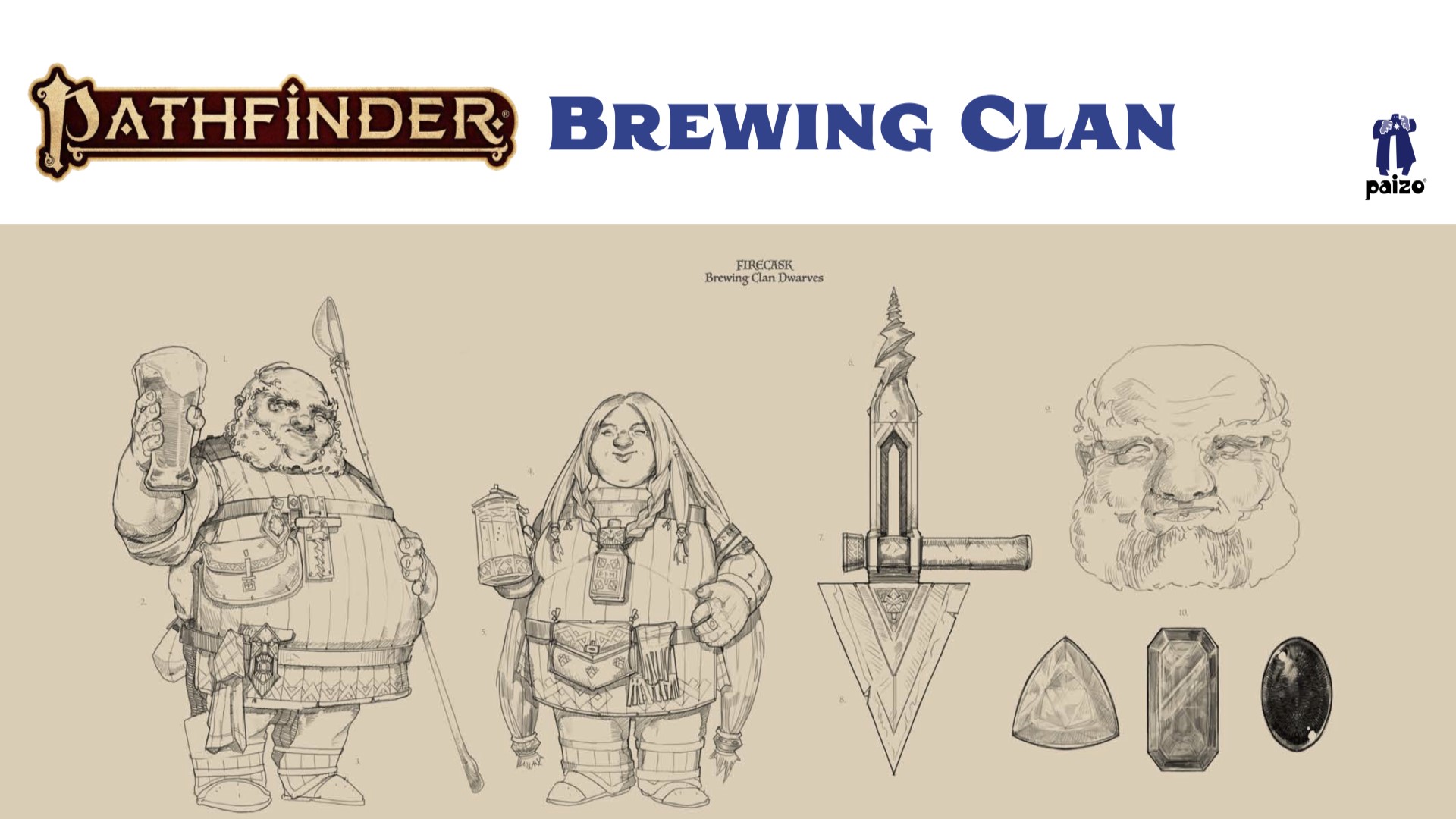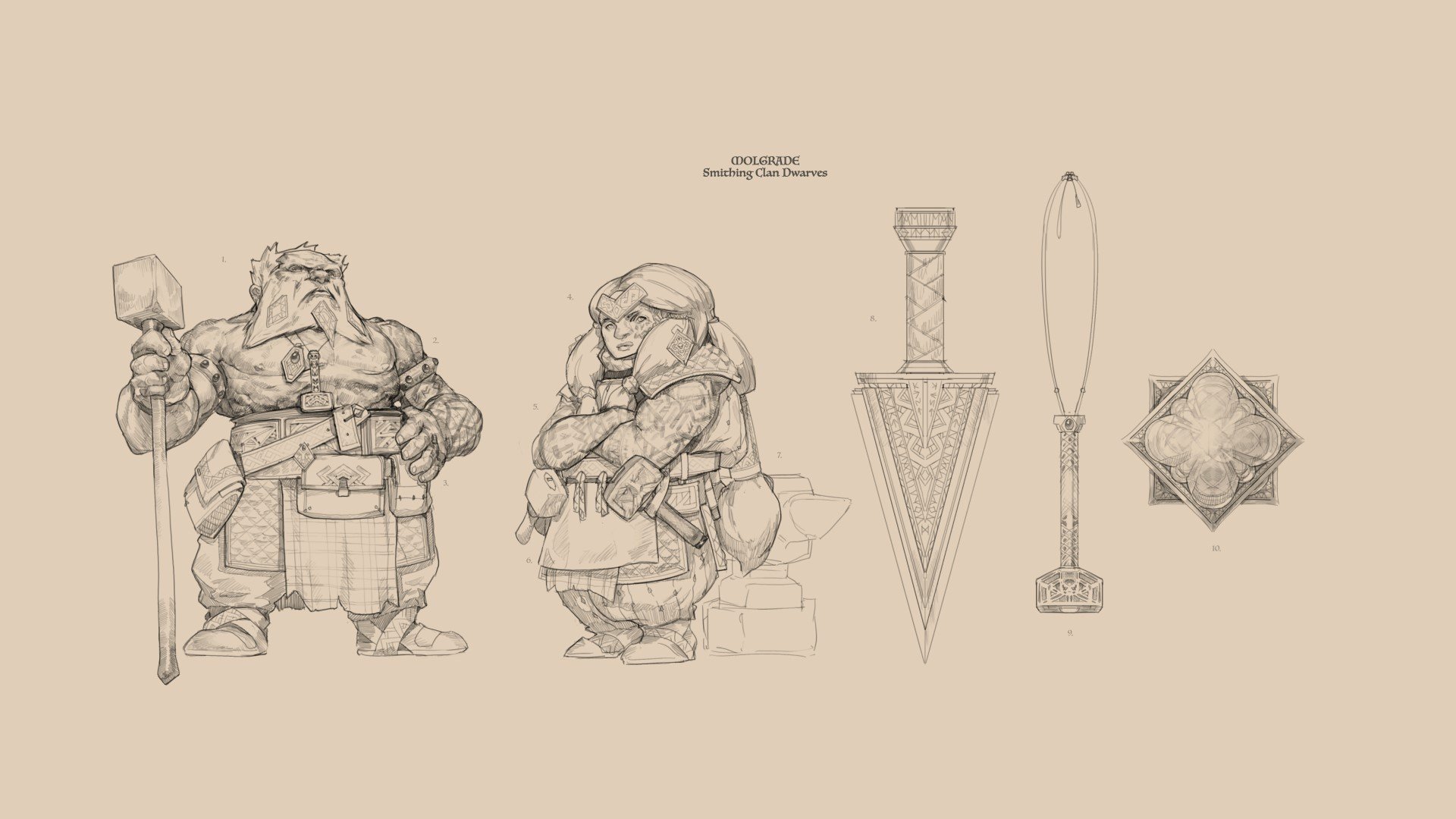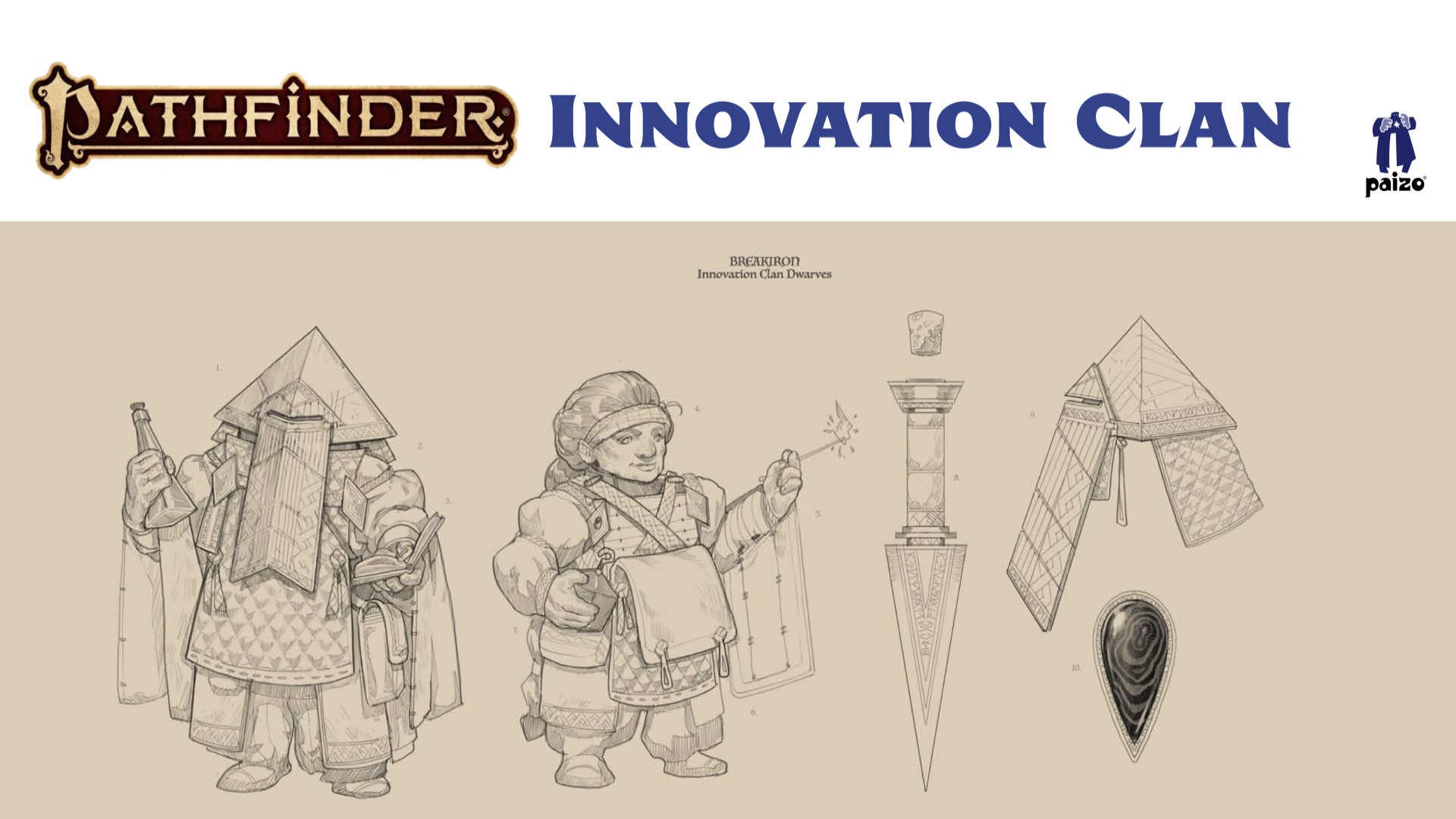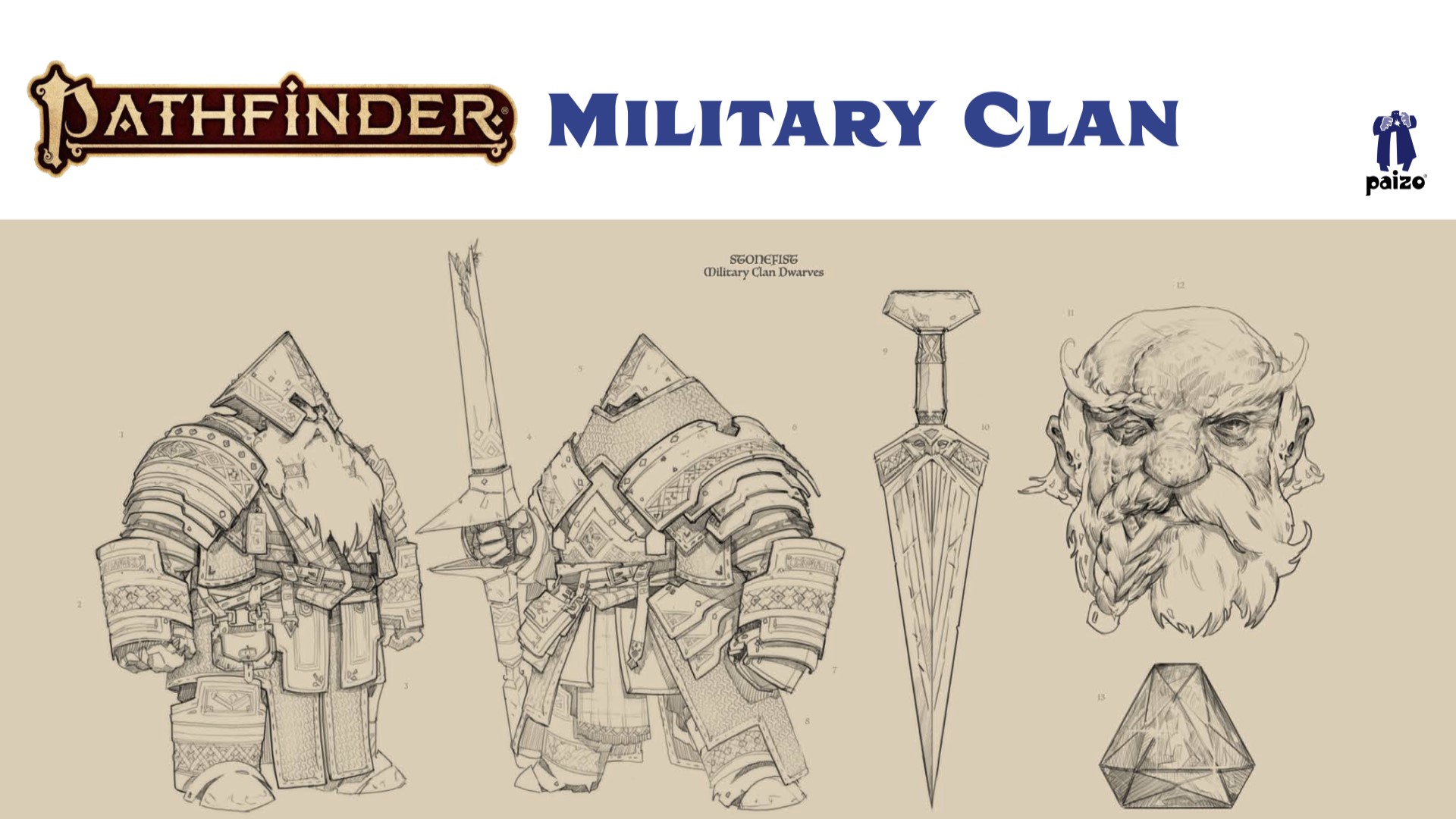After announcing several tabletop RPG products at Gen Con, publisher Paizo has revealed another surprise Pathfinder setting sourcebook. Expected to release in sometime in 2023, Pathfinder Lost Omens Highhelm dives deep into one of the game’s dwarven cities for the very first time – and speaking of firsts, Wargamer can exclusively reveal a mountain of upcoming content from the book.
Paizo’s official product description tells us plenty about the titular Highhelm. “Delve the mountain deep! When the first dwarves reached the surface of Golarion, they built enormous keeps as a monument to their legacy and to serve as their new home. The mightiest of these keeps was Highhelm, a Sky Citadel deep in the Five Kings Mountains. While other Sky Citadels have fallen since the Quest for Sky, Highhelm holds strong, serving as one of the major centres of dwarven culture.”
“Lost Omens Highhelm delves deep into the Emperor’s Peak to present Highhelm in all its glory”, Paizo says. “This book details everyday life in the city, dwarven culture, and the various clans that influence the Sky Citadel. It also provides a full gazetteer of the city’s various layers and surroundings, each with adventuring locations and sites of intrigue suitable for a multitude of adventures.”
“An included poster map presents Highhelm’s layers in high detail and serves as an aid for campaigns centred on the dwarven city”, the product description adds. “Characters looking for new options can visit Highhelm for new equipment, ancestry feats, animal companions, and more!”
Exclusive images shared with Wargamer reveal the themes for various dwarven clans found in Highhelm (you can learn more about these and see the pictures below). The magic dwarves are known as the Runebinder clan, and the smithing clan are the Molgrade dwarves. The Stonefist clan seem to be Highhelm’s military forces. The Breakiron clan are known as ‘innovation clan dwarves’, and the dwarves brewing the city’s beers are known as the Firecask dwarves.
To dig deeper and learn more about the book, Wargamer spoke to senior Paizo developer and Lost Omens series co-lead Luis Loza. Loza, along with the rest of Highhelm’s developers and authors, has spent plenty of time in Highhelm designing wall moss that helps the city breathe and figuring out how its inhabitants have been shaped by the adventure paths of first edition.
WG: Is this the first time we’ve seen Highhelm in second edition Pathfinder?
LL: It was mentioned a little bit in previous material. Our first Lost Omens book gives a brief overview of the setting and, of course, happens to mention Highhelm – but this is the first time we’re really giving it a deep dive in all of Pathfinder history. We had a brief look at it in a setting book back in first edition Pathfinder, and that was about eight pages or so. This is an entire book: 136 pages dedicated to everything that involves Highhelm.
Tell me more about Highhelm.
Highhelm is the centre of dwarven culture in our setting. Our dwarves are a little interesting – they lived underground for thousands of years until they decided ‘let’s go up and see what there is’. When they breached the surface, they encountered humans and elves and other creatures, and Highhelm became the central hub for all things dwarven.
The dwarves have a special type of city that’s built in the mountains, known as Sky Citadels, and Highhelm is the biggest one of those. There are dwarves scattered throughout the setting, but Highhelm is the biggest city with the most diverse culture. It’s effectively New York City for dwarves, but it just happens to be built into a large mountain.
The details a lot of the authors came up with are really interesting. There was a lot of considering how they’ve adapted to living in the mountain. For example, there are druids who developed specific moss that grows along the walls of the city to create breathable air, and they have Grendel grubs as a backup food supply.
It’s been mentioned we can expect new dwarf clans in the book – can you tell me more about those?
One thing that we’ve been doing with Pathfinder second edition is trying to make all of our ancestries, which is our word for races or playable species in Pathfinder, feel a bit more distinct. To make our dwarves feel a bit more distinct, we decided to break down their culture into something unique for Pathfinder – this is where we came up with the idea for clans.
Your clan is very important. Every dwarf that is born is given a special little clan dagger, one with a gem that represents their clan and has a very distinct shape. It’s meant to serve them for their entire lifetime; you’re given your clan dagger at birth and you hold on to that thing forever. This is our first chance to really dive into dwarven culture since the launch of Pathfinder second edition – we’ve mentioned clan daggers, but we haven’t shown who these clans are.
Highhelm features 12 major clans, each of them focused on a different task or job. There’s a clan that’s based on keeping track of dwarven history, and there’s a clan that’s all about smithing. One clan’s all about magic, while another focuses on general labour, doing menial tasks around Highhelm because they’re proud to be the backbone of the city.
There are a couple of other clans scattered throughout, but these are the 12 main ones we focus on. The book explains how each clan is formed, who the important figures are, and how you might join or switch clans. Even if you’re playing non-dwarves, you can join a clan – though it might take a little more work.
What features of the book do you think Pathfinder players will most look forward to?
As well as setting information, there are a number of dwarf-related ancestry feats. If you’re a dwarf player, this book will be for you – but even if you’re not, there’s still plenty to do. One part of the city has a black market that’s selling very strange magical weapons created by a mechanical Lich. There are new animal companions like mules, mountain goats, and strange underground lizards. There’s a dwarven pantheon of gods that we’ve talked about a lot over the years, and we’re finally getting a chance to go into full detail on who these eight Dwarven gods are.
And finally, the big thing is a new archetype in this book called the Stalwart Defender, which has ties back to third edition D&D. There was a prestige class called the Dwarven Defender, which was just a very tough armoured warrior type of dwarf. Over the years as Pathfinder adopted that we changed it to a Stalwart Defender. We thought we’d bring it forward to second edition so you can play a Stalwart Defender again.
We wanted to give people something that was familiar but wasn’t just another fantasy city. The other thing we wanted to do is move the story of the setting forward. With the release of Pathfinder second edition, we’ve been trying to implement changes that would have come about with the adventures that we put out in first edition. We wanted to show that the world is reacting to the changes that we’ve implemented, that things that are happening.
Right now, the dwarves are reacting to the rise of the Lich Tar-Baphon who arose at the end of first edition. In Highhelm, they’re preparing by using a mass of adamantine found deep in the mountain to build a giant shield around their home.
You’ll be able to find more details on Paizo’s product pages – here’s Lost Omens Highhelm and the Lost Omens Highhelm special edition.
